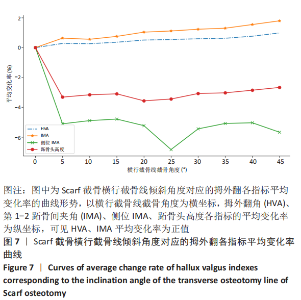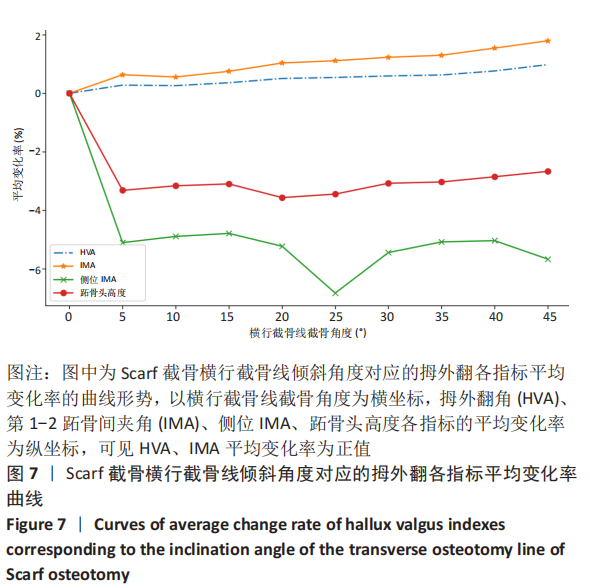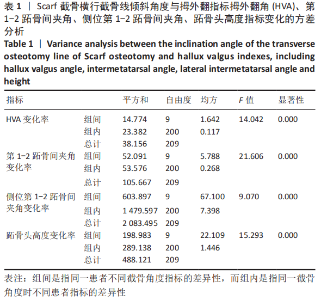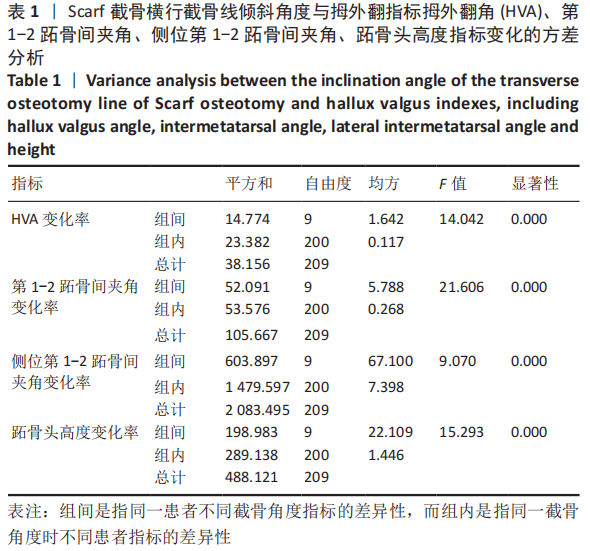[1] 白子兴,李晏乐,曹旭含,等. 拇外翻有限元模型:研究进展及未来方向[J].生物医学工程与临床,2019,23(5):607-612.
[2] 温建民. 拇外翻诊断与治疗方法选择的探讨[J].中国骨伤,2018, 31(3):199-202.
[3] 彭建光,王强,李旗.踇外翻患者Scarf截骨术对第一跖骨旋转的影响25例报告[J].中国骨与关节杂志,2018,7(12):933-936.
[4] ZAMBELLI R, BAUMFELD D. Intraoperative and Postoperative Evaluation of Hallux Valgus Correction: What Is Important? Foot Ankle Clin. 2020; 25(1):127-139.
[5] ROSE B, BOWMAN N, EDWARDS H, et al. Lengthening Scarf osteotomy for recurrent hallux valgus. Foot Ankle Surg. 2014;20(1):20-25.
[6] TÓTH K, HUSZANYIK I, KELLERMANN P, et al. The effect of first ray shortening in the development of metatarsalgia in the second through fourth rays after metatarsal osteotomy. Foot Ankle Int. 2007;28(1): 61-63.
[7] KARATAGLIS D, DINLEY RJ, KAPETANOS G. Comparative study between Wilson and Mitchell metatarsal osteotomies for the treatment of hallux valgus in adults. Acta Orthop Belg. 2001;67(2):149-56.
[8] 孙超,王智,张树,等.第1跖骨远端斜行截骨术治疗拇僵硬的回顾分析[J].中华骨与关节外科杂志,2018,11(2):96-101.
[9] 高宪斌,蔡水华.Scarf截骨术治疗中重度拇外翻畸形[J].临床骨科杂志,2017,20(6):762.
[10] 孙卫东,吴寿长,温建民.拇外翻术后拇外翻角和第1-2跖骨间角X射线测量方法评价[J].中国组织工程研究,2013,17(4):678-682.
[11] MISKEJ M,KUBÁLEK J,BUZEK D. Scarf osteotomy for the treatment of hallux valgus deformity. Achievements and complications. Acta Chir Orthop Traumatol Cech. 2010;77(1):52-57.
[12] DE VIL JJ, VAN SEYMORTIER P, BONGAERTS W, et al. Scarf osteotomy for hallux valgus deformity: a prospective study with 8 years of clinical and radiologic follow-up. J Am podiatr med assoc. 2010;100(1):35-40.
[13] FAKOOR M, SARAFAN N, MOHAMMADHOSEINI P, et al. Comparison of Clinical Outcomes of Scarf and Chevron Osteotomies and the McBride Procedure in the Treatment of Hallux Valgus Deformity. Arch Bone Jt Surg. 2014;2(1):31-36.
[14] BORRELLI AH, WEIL LS. Modified Scarf bunionectomy: our experience in more than 1000 cases. J Foot Surg. 1991;30:609-612.
[15] MOLLOY A, WIDNALL J. Scarf osteotomy. Foot Ankle Clin. 2014;19(2): 165-180.
[16] XIONG Y, SHEN B, HAO C, et al. Transfer of abductor hallucis tendon combined with Scarf osteotomy versus single Scarf osteotomy in moderate to severe hallux valgus deformity: a comparative retrospective cohort study. BMC Musculoskelet Disord. 2019;20(1):455.
[17] KAUFMANN G, HOFER P, BRAITO M, et al. Effect of Akin Osteotomy on Hallux Valgus Correction After Scarf Osteotomy With Hallux Valgus Interphalangeus. Foot Ankle Int. 2019;40(10):1182-1188.
[18] KAUFMANN G, HOFMANN M, ULMER H, et al. Outcomes after Scarf osteotomy with and without Akin osteotomy a retrospective comparative study. J Orthop Surg Res. 2019;14(1):193.
[19] MARUDANAYAGAM A, APPAN SV. Scarf osteotomy with or without proximal phalangeal osteotomy for severe hallux valgus deformity. J Orthop Surg (Hong Kong). 2014;22(1):39-41.
[20] 吕志宇,赵义荣,俞春生,等.三维可视化技术在Chevron手术治疗拇外翻术前规划中的应用探讨[J].中国临床解剖学杂志,2017, 35(1):94-97.
[21] O’BRIAIN DE, FLAVIN R, KEARNS SR. Use of a geometric formula to improve the radiographic correction achieved by the Scarf osteotomy. Foot Ankle Int. 2012;33(8):647-654.
[22] DAVIES MB, BLUNDELL CM, MARQUIS CP, et al. Interpretation of the Scarf osteotomy by 10 surgeons. Foot Ankle Surg. 2011;17(3):108-112.
[23] SAMARAS D, GOUGOULIAS N, VARITIMIDIS S, et al. Midterm experience of Scarf osteotomy as a new technique in a General Orthopaedic Department. Foot (Edinb). 2019;40:68-75.
[24] JASTIFER JR, COUGHLIN MJ, SCHUTT S, et al. Comparison of radiographic and anatomic distal metatarsal articular angle in cadaver feet. Foot Ankle Int. 2014;35(4): 389393.
[25] 张鹏,钟宗雨,金泽亚,等.基于足负重位CT影像应用Mimics软件测量踇外翻相关指标[J].中华解剖与临床杂志,2018,23(1):7-13.
[26] ZHONG Z, ZHANG P, DUAN H, et al. A Comparison Between X-ray Imaging and An Innovative Computer-aided Design Method Based on Weightbearing CT Scan Images for Assessing Hallux Valgus. J Foot Ankle Surg. 2021;60(1):6-10.
[27] GENG X, SHI J, CHEN W, et al. Impact of first metatarsal shortening on forefoot loading pattern: a finite element model study. BMC Musculoskelet Disord. 2019;20(1):625.
[28] 刘卫刚,汪勇刚,马亮,等.改良Scarf截骨术治疗拇外翻的临床疗效[J].临床骨科杂志,2020,23(1):75-77.
[29] 李刚,孟祥虹,王植.双足负重与非负重位数字化X线摄影对拇外翻畸形角度测量的对比研究[J].实用医学影像杂志,2019,20(3): 224-226.
[30] ZHANG YZ, LU S, ZHANG HQ, et al. Alignment of the lower extremity mechanical axis by computer-aided design and application in total knee arthroplasty. Int J Comput Assist Radiol Surg. 2016;11(10):1881-1890.
|



